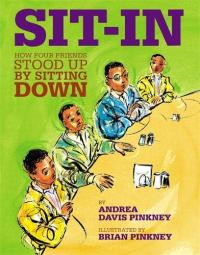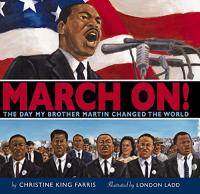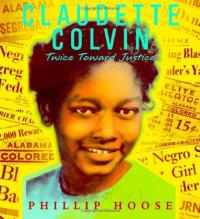
Rosa
Illustrator:
Bryan Collier Age Level:
6-9 Genre:
Biography, Nonfiction 
Sit-In: How Four Friends Stood Up by Sitting Down
Illustrator:
Brian Pinkney Age Level:
6-9 Genre:
Biography, Nonfiction 
Child of the Civil Rights Movement
Illustrator:
Raul Colón Age Level:
6-9 Genre:
Nonfiction 
Henry Aaron’s Dream
Age Level:
6-9 Genre:
Biography, Nonfiction 
March On! The Day My Brother Martin Changed the World
Illustrator:
London Ladd Age Level:
6-9 Genre:
Biography, Nonfiction 
Muhammad Ali: The People’s Champion
Illustrator:
Alix Delinois Age Level:
6-9 Genre:
Nonfiction, Biography 
Let It Shine: Stories of Black Women Freedom Fighters
Illustrator:
Stephen Alcorn Age Level:
6-9 Genre:
Biography, Nonfiction 
Claudette Colvin: Twice Toward Justice
Age Level:
9-12 Genre:
Nonfiction, Biography 
Opal Lee and What It Means to Be Free: The True Story of the Grandmother of Juneteenth
Illustrator:
Ketura A. Bobo Age Level:
6-9 Genre:
Biography Published:
2022

The Power of Her Pen: The Story of Groundbreaking Journalist Ethel L. Payne
Illustrator:
John Parra Age Level:
6-9 Genre:
Biography 
Evicted!: The Struggle for the Right to Vote
Illustrator:
Charly Palmer Age Level:
9-12 Genre:
Nonfiction 
Carter Reads the Newspaper
Illustrator:
Don Tate Age Level:
6-9 Genre:
Biography